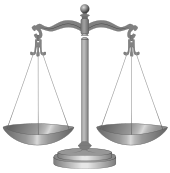US Supreme Court blocks stay on federal regulation on privately made firearms
Thursday, August 10, 2023
Tuesday, the US Supreme Court, voting 5–4, ordered a temporary revival of a 2022 regulation on "ghost guns", or privately made firearms (PMFs) — defined as firearms a "licensed manufacturer" neither produced nor marked with a serial number, staying a lower court suspension of the regulation during President Joe Biden's administration's appeal process.
In the stayed June decision, U.S. District Judge Reed O'Connor in Fort Worth, Texas ruled the administration was not authorized to redefine ghost gun parts and kits as firearms as, he said, according to the US Congress a firearm could not be "weapon parts, or aggregations of weapon parts, regardless of whether the parts may be readily assembled into something that may fire a projectile."
The ATF's final rule 2021R-05F, or the "Frame or Receiver" rule, outlined the restrictions, requiring serial numbers in "easy-to-build" gun kits and elsewhere under the revised definition of a receiver. It also mandated sellers perform background checks on prospective purchasers of "kits that contain the parts necessary for someone to readily make a gun." Kits were previously available without either requirement. The ATF's stated goal with the Frame or Receiver rule was to ensure the "proper marking, recordkeeping, and traceability" of firearms.
In a statement from Everytown for Gun Safety, John Feinblatt, president of Everytown, remarked: "Americans across the country will be safer thanks to the Supreme Court’s decision today to keep ATF's [the Bureau of Alcohol, Tobacco, Firearms and Explosives] life-saving ghost guns rule in effect while the appeals process plays out."
Cody J. Wisniewski, who represented one of the plaintiffs, the Firearms Policy Coalition, in the case, said: "We're deeply disappointed that the Court pressed pause on our defeat of ATF's rule effectively redefining 'firearm' and 'frame or receiver' under federal law."
Regulations in the Gun Control Act of 1968 did not cover privately-made firearms for "personal, lawful" use, so their creation was legal as long as the creator could legally own a firearm and, for certain weapons the National Firearms Act regulated, like machine guns, the ATF approved and registered it — the latter being the same process as when one purchased a firearm from a business that held a Federal Firearms License (FFL).
Advancements in technology and the availability of instructions for firearm manufacture have led to an increase in privately-made firearms, according to the ATF. The ATF has reported an uptick in unserialized firearms the government found connected to criminal investigations. The ATF said this rise prompted it to compose the "Frame or Receiver" rule.
Related news
Sister links
Sources
- Andrew Chung. "US Supreme Court restores Biden's curbs on homemade 'ghost guns' — for now" — Reuters, August 8, 2023
- Ariane de Vogue. "Roberts and Barrett join liberals as Supreme Court revives federal ghost gun restrictions" — CNN, August 8, 2023
- "VICTORY FOR GUN SAFETY IN THE COURTS: U.S. Supreme Court Allows Biden Administration Ghost Guns Rule to Stay in Effect, Everytown for Gun Safety Responds" — Everytown for Gun Safety, August 8, 2023
- "FPC and FPCAF Respond to Supreme Court Stay of Judgment Vacating ATF's "Frame or Receiver" Rule" — Firearms Policy Coalition, August 8, 2023
- "Definition of "Frame or Receiver" and Identification of Firearms" — Bureau of Alcohol, Tobacco, Firearms and Explosives, December 27, 2022
- "National Firearms Commerce and Trafficking Assessment: Firearms in Commerce" — Bureau of Alcohol, Tobacco, Firearms and Explosives, May 5, 2022 (PDF)
